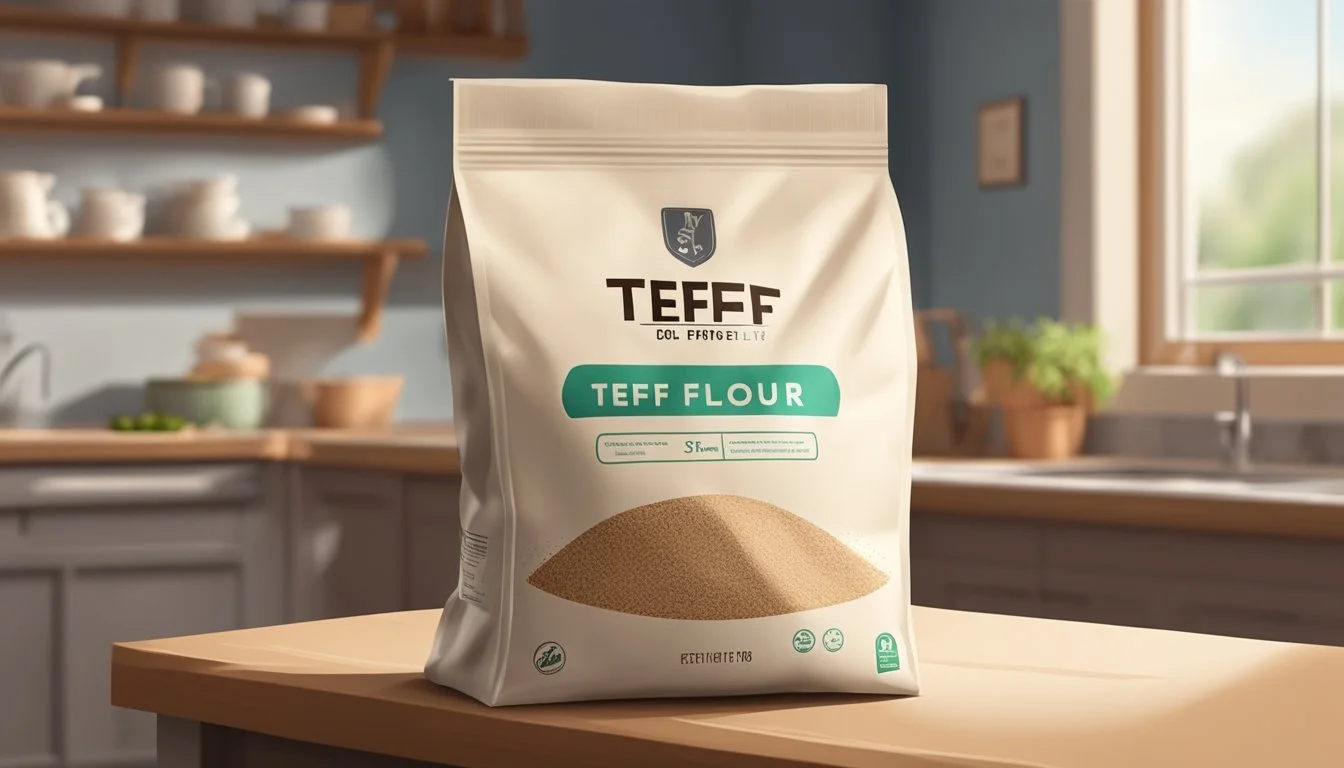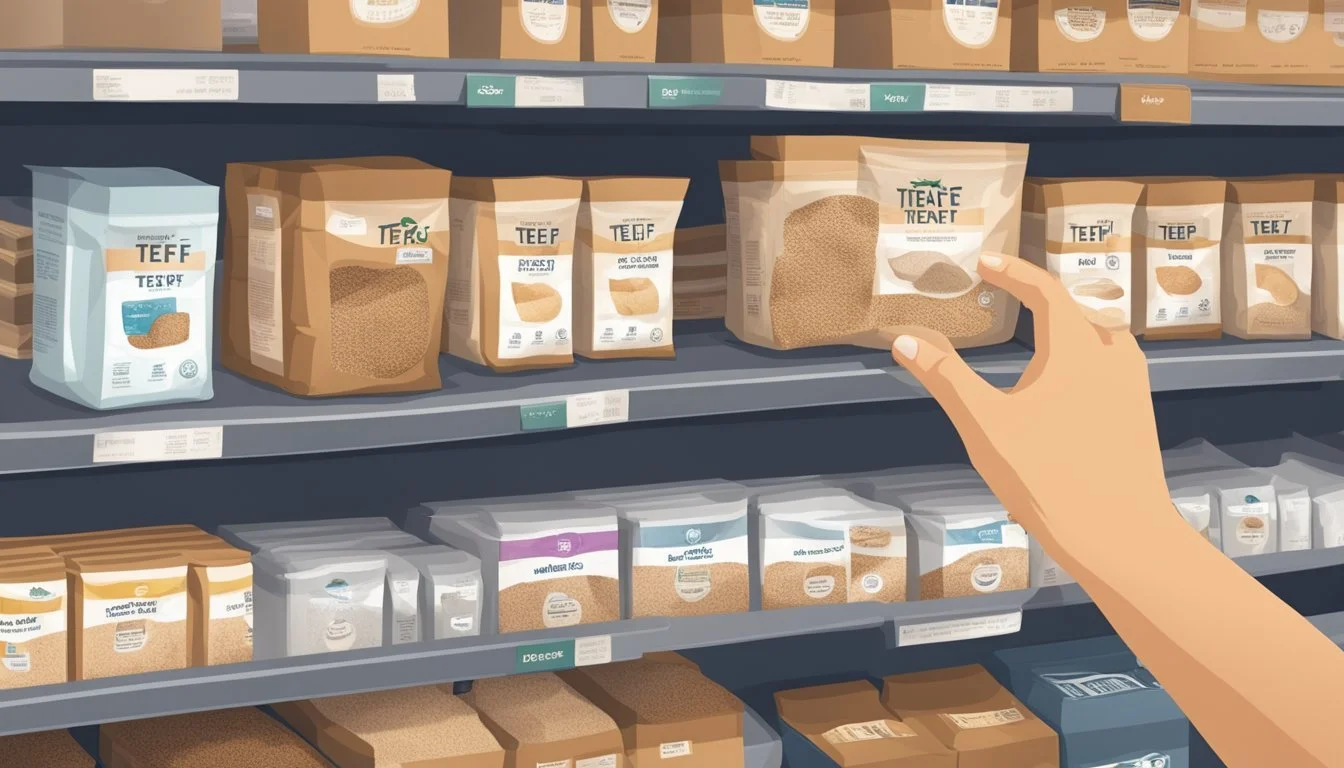How Long Does Teff Flour Last?
Shelf Life and Storage Tips
Teff flour is a gluten-free alternative to traditional wheat flours, derived from the teff grain, which is native to Ethiopia. Being a whole grain flour, it includes the germ, bran, and endosperm of the seed, which are rich in nutrients. This composition contributes to teff flour's nutritional profile, making it a source of protein, fiber, and minerals such as iron. Since the germ contains oils, teff flour can be more prone to rancidity than refined flours. It is important for consumers to understand how to properly store teff flour to maintain its quality and extend its shelf life.
The shelf life of teff flour is generally shorter than that of refined flours, primarily because the natural oils in whole grains can oxidize over time, leading to spoilage. When stored in a cool, dry place in an airtight container, teff flour's shelf life can be maximized, typically remaining fresh for up to a year. Those looking to extend its usability even further might consider refrigerating or freezing the flour, which can effectively prolong its life for several months beyond this timeframe. It's advisable to check for changes in smell or color, which may indicate that the flour has started to spoil and should not be used.
Understanding Teff Flour
Teff is an ancient grain native to Ethiopia and Eritrea and has been a staple in the diet of these regions for centuries. The grain is small in size but packs a nutritional punch; it's high in protein, calcium, and iron. Teff has gained popularity worldwide, particularly among those with gluten-free diets including individuals with celiac disease.
As a whole grain, teff contributes to a healthy diet. Its flour is a favored ingredient for gluten-free baking and is celebrated for its mild, nutty flavor. Teff flour can be integrated into various recipes, from traditional Ethiopian flatbreads like injera to modern gluten-free baked goods.
The composition of teff flour makes it a suitable alternative for individuals seeking nutritious, gluten-free options. Its versatility and nutrient profile match the needs of a health-conscious audience.
Nutrient Benefit Protein Supports muscle growth and repair. Calcium Essential for bone health. Iron Crucial for oxygen transport and energy production.
This Ethiopian cereal is often ground into flour and used for its rich flavor and versatility in the kitchen. Unlike other gluten-containing grains, teff flour is inherently gluten-free, making it a safe and healthful choice for a wide range of consumers.
Storing Teff Flour
Proper storage of teff flour extends its shelf life and maintains its quality. The following subsections provide specific instructions on how to create the ideal storage environment, understand its shelf life, and use refrigeration and freezing methods effectively.
Storage Environment
To store teff flour correctly, it should be kept in a cool and dry place, away from sources of heat and light which can affect its freshness. Placing the flour in an airtight container is crucial to prevent exposure to moisture and other contaminants. For optimal preservation, the best choice is to use glass or plastic containers with secure seals.
Shelf Life
The typical shelf life of teff flour, when stored properly, is approximately 1 to 2 years. Factors that influence the longevity include the flour’s exposure to air and the original milling date. Purchasers should always check the manufacturer's label for specific storage recommendations and best-by dates. It's important to note that while teff flour can last for a long time, its nutritional value and flavor might diminish over time, so using it sooner rather than later is advisable.
Refrigeration and Freezing
For extended storage, teff flour can be kept in the refrigerator or freezer. This is particularly helpful in warmer climates or during summer months when room temperatures are higher. When storing in the fridge, place the airtight container towards the back where it is cooler and more stable in temperature. In the freezer, label the container with the date of storage to ensure it is used within an appropriate time frame and to avoid freezer burn.
Signs of Spoilage
When assessing the longevity of teff flour, one must be attentive to both its visual and textural properties as well as its odor and flavor. Changes in these characteristics serve as reliable indicators that the flour may have spoiled.
Visual and Textural Changes
If teff flour has gone bad, the user might notice visual anomalies such as discoloration or the presence of mold. Spoiled flour can also exhibit textural changes; it may clump together, appear damp, or develop a slimy coating, indicating that moisture has intruded the product, which accelerates spoilage.
Odor and Taste
A deviation from the flour's inherent mild and slightly nutty aroma to a rancid or sour smell is a telltale sign of spoilage. The presence of a musty or off-odor suggests rancidity. When teff flour begins to taste bitter, this is an indication that it should no longer be used, as the flavor profile has been compromised. If one detects such odors or an alteration in taste, they should dispose of the flour to avoid consuming a potentially compromised product.
Culinary Uses of Teff Flour
Teff flour is renowned for its versatility in the kitchen, finding its place in both traditional Ethiopian cuisine and modern gluten-free baking.
Traditional and Contemporary Recipes
Teff flour is a staple in Ethiopian cuisine, most famously used in making injera, a sourdough-risen flatbread with a slightly spongy texture. This bread is not only a traditional food but also serves as an edible serving plate, with various dishes piled on top of it. In addition to injera, teff flour is also used to create various porridge-like meals that are integral to Ethiopian and Eritrean diets.
The adaptability of teff flour extends to contemporary recipes far beyond its origins. It's being embraced globally for its nutritional benefits and is used to give a nutritional boost to pancakes, cookies, and cakes. Chefs and home cooks alike appreciate teff flour for its slight nuttiness and ability to complement both sweet and savory dishes.
Baking with Teff Flour
Teff flour is a rising star in the realm of gluten-free baking. When substituting teff flour in recipes, a good rule of thumb for bakers is to replace about 25% of the standard flour with teff flour to maintain the structure and texture of baked goods.
For those looking to experiment with teff in bread, it imparts a unique flavor and nutritional profile, distinguishing the bread from its wheat-based counterparts. Cakes and cookies also benefit from teff flour's rich taste and moist crumb. As a nod to its versatility, it has been used successfully in gluten-free egg noodles, adding depth to the flavor profile.
Bakers are frequently using teff flour to enhance the taste and nutritional content of traditional baking recipes, which showcases the flour's ability to blend seamlessly into a wide array of culinary creations without overwhelming the original flavors.
Health Benefits
Teff flour, derived from an ancient grain, is celebrated for its significant health benefits, primarily due to its rich nutritional profile and its status as a gluten-free flour option.
Nutritional Profile
Teff flour is densely packed with a range of nutrients essential for overall health. It boasts high levels of fiber, critical for digestive well-being, and contains a noteworthy concentration of minerals such as magnesium and zinc. These minerals are vital for a range of bodily functions, including nervous system support and immune health. Moreover, teff flour is a source of diverse and essential amino acids, which are the building blocks of proteins in the body.
Fiber: Aids in digestive health and supports healthy blood sugar control.
Magnesium: Contributes to muscle and nerve function, blood glucose control, and blood pressure regulation.
Zinc: Essential for immune function, wound healing, and DNA synthesis.
Gluten-Free Benefits
For individuals with celiac disease or those following a gluten-free diet, teff flour offers substantial advantages. As a gluten-free alternative, it allows for the preparation of a variety of safe-to-eat baked goods without the risk of triggering health issues associated with gluten intake. The low glycemic index of teff flour is noteworthy as it can contribute to more stable blood sugar levels, making it a favorable option for people managing diabetes or those mindful of their glycemic load.
Gluten-Free: Safe for people with celiac disease or gluten sensitivity.
Low Glycemic Index: Helps in maintaining more stable blood sugar levels.
Substitutes and Alternative Flours
When teff flour is unavailable or if one desires to explore different nutritional profiles and flavors, a variety of substitutes and alternative grains can be employed. These alternatives offer a range of gluten-free options and parallel the nutty, earthy qualities of teff while providing their distinct characteristics.
Comparing Teff Flour to Other Grains
Teff Flour is known for its small size but nutritionally dense profile, often used in Ethiopian cuisine to make Injera. When comparing it to other grains, several possess similar health benefits and could serve as substitutes:
Amaranth: Similar to teff, amaranth is an ancient grain rich in protein and amino acids. It exhibits a nutty flavor and can complement or replace teff in recipes.
Quinoa: Another ancient grain with a complete protein profile, quinoa offers a fluffy texture and a slightly nutty flavor, which can mimic teff's distinctive taste.
Millet: Millet provides a mild, sweet flavor with a texture that works well as a teff alternative in various dishes.
Buckwheat: Despite its name, buckwheat is gluten-free and offers a robust flavor and a texture that can closely resemble that of teff flour, making it a suitable replacement.
Sorghum: Sorghum flour (how long does sorghum flour last?) is often used as a gluten-free substitute as it provides a texture and taste conducive to baking and cooking.
Gluten-Free Alternatives
For those with gluten sensitivities or celiac disease, finding a flour that mimics the qualities of teff while maintaining a gluten-free profile is essential. Here are specific gluten-free options:
Rice Flour: This commonly found flour serves as a neutral-flavored gluten-free alternative that lends itself well to various culinary applications.
Oat Flour: With its mild flavor and beneficial fiber content, oat flour is easily used as a teff alternative, although one should ensure it's labeled gluten-free to avoid cross-contamination.
Buckwheat Flour: It offers a stronger flavor and works well in recipes that can handle a more pronounced taste profile. It can generally be substituted 1:1 for teff flour.
All-Purpose Gluten-Free Flour: A blend of gluten-free flours fashioned to mimic the texture of wheat flour often includes a combination of the above alternatives to achieve a suitable teff replacement.
Substituting flours can affect the final outcome of a recipe, making it essential to consider the specific qualities of each alternative to ensure success.
Buying and Selecting Teff Flour
When purchasing teff flour, a consumer should pay close attention to the variety of teff and its labeling, which provides insights into the flour's origin and quality.
Different Varieties
Teff flour comes primarily in three colors: ivory, brown, and red. Each variety offers a distinct taste and nutritional profile. Ivory teff tends to have a milder flavor, making it suitable for a broad range of recipes. Brown teff provides a nuttier taste, and red teff, the rarest type, offers an earthy tone to dishes. Consumers should consider their flavor preferences and recipe requirements when selecting a type of teff flour.
Labeling and Origin
Consumers are advised to read the labels carefully. The label should provide information about the origin of the flour. Much of the world's teff comes from Africa, particularly Ethiopia where it is a staple grain. Labels may also indicate if the teff flour is organic, non-GMO, or if it has been pre-fermented, which can be preferable for certain culinary applications. Understanding the label helps consumers trace the quality of the teff flour and assures them of purchasing authentic and potentially more sustainable products.









